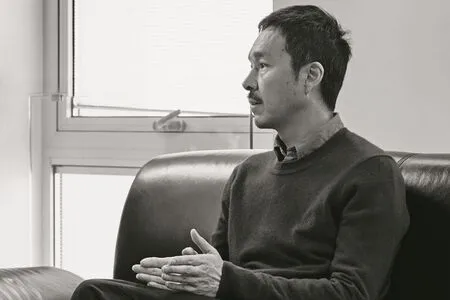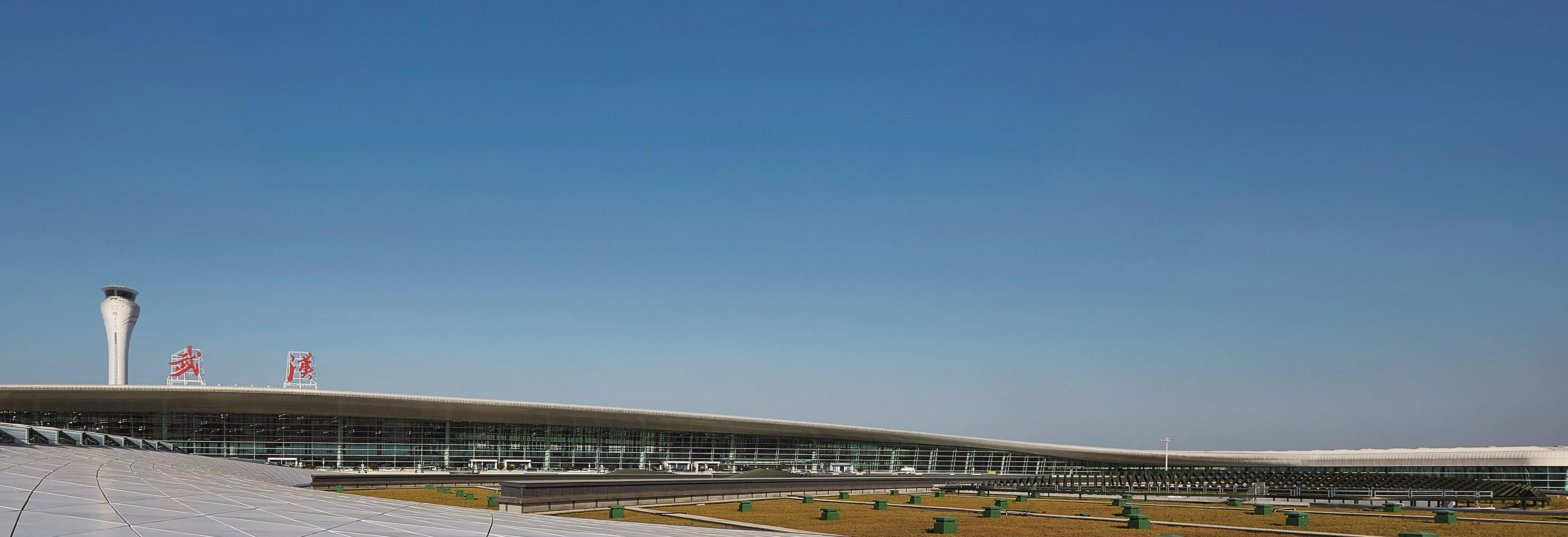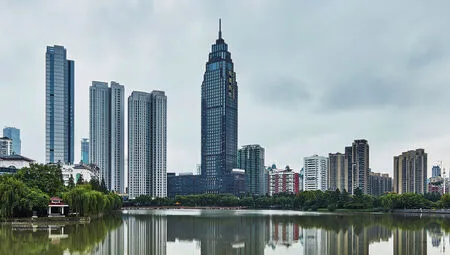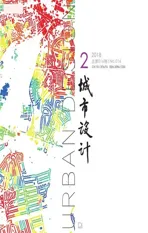[U·说]桂学文·说武汉
2018-07-13桂学文IntervieweeGUIXuewen
桂学文 / [Interviewee]GUI Xuewen
[时 间] 2018年3月2日 / [Date]March 2, 2018
[地 点] 武 汉 / [Place]Wuhan, China
[采访人] 董英俊 贾海发 / [Interviewer]DONG Yingjun, JIA Haifa
Q1 请您谈谈荆楚建筑文化的特色及其对塑造城市空间的影响。
荆楚是“两湖”区域的古称,以洞庭湖为界而分湖南、湖北。此区域内水资源丰富,气候、地理特征明显。因此,荆楚建筑与水存在着密不可分的联系。
荆楚建筑中既有亲水、用水的一面,也有惧水、防洪的一面。亲水性在逐水而居的城镇聚落与江河码头的商贸交通中均有体现;防洪性则可从考古发现的荆楚建筑传统形制及遗址中探知。传统的荆楚建筑常见多台、高台形式,正是顺应地势,通过设计高低不等的场地、建筑竖向变化来适应水的涨落起伏。湖北省的武汉、宜昌、沙市、襄阳,湖南省的长沙、岳阳等地均有类似例证。
荆楚地区的城市空间也多是沿水展开。在古代,江河湖泊除了是重要的交通要道,更在战争期间成为抗击外敌的天然屏障。如今,大江大湖彰显了荆楚地区的城市特点,沿江、沿湖区域纷纷成为城市中最为宝贵的土地资源,城市空间的展开多以大型江河湖泊为中心,结合周边地理条件逐步扩展。例如武汉便是以长江、汉江交汇处为核心,以商贸和交通为主要特色的“江城”,其丰富的“码头文化”也正是源自于此。
Q2 武汉是座特色鲜明的城市,您认为武汉有哪些充满活力的公共空间,它们在城市中是如何发挥作用的?
武汉由长江和汉江划分为武昌、汉口、汉阳三镇。三镇各具特点,呈现出多中心的状态,因此武汉的公共空间也较为分散,存在一定的差异性、多样性。
长江作为武汉城市的核心要素、三镇的地理边界,其上跨越有多座大型桥梁连接两岸。由黄鹤楼、长江大桥、龟山和蛇山共同组成的立体空间最具特色,是武汉的名片。

图1 / Figure 12018年3月2日,桂学文总建筑师在中南建筑设计院股份有限公司接受采访Mr. GUI Xuewen in Interview, March 2, 2018, Central-South Architectural Design & Research Institute Co., Ltd., Wuhan,China
过去对武汉三镇的印象,是武昌兴文教,汉口重商贸,汉阳多工厂。在近年的发展中,武汉市各界逐步意识到这些历史文化遗存的价值,因此渐渐从高速发展的大拆大建转向精耕细作的特色发掘,而城市的公共空间也在这种趋势中随着城市的规划、建设而发展变化。
以武昌为例,传统的大学校园、教会聚落既有特定功能,也是典型的城市特色公共空间,武汉大学、昙华林片区便是其中典型代表。它们近年来活力不减,武汉大学还因为樱花节吸引的游客数量逐年暴增,不得不在樱花开放期间限制外来游客,实行预约参观。这些传统城市特色公共空间是武汉市珍贵的历史文化元素,类似的还有汉口的江汉路步行街、中山大道、汉阳的龟山北口等地。
当然,作为当代建筑师,除了关心城市传统公共空间的保留与更新,还应参与到城市建设的创新发展之中(图2)。近年来武汉市着力打造多个主题核心区,积极思考和推进武汉市的特色发展进程,如武汉中央文化区、武昌滨江文化商务区、汉正街·武汉中央服务区、武汉国际博览会展区等。已建成的“楚河—汉街”,便是以“人工河”—“楚河”为纽带,连接沙湖、东湖,并在楚河南岸形成一条步行商业街—“汉街”,其建筑形式以民国风为主,结合现代设计手法形成了长达1.7km的步行街,是一个既有体验型商业,又与“楚河”及城市相呼应、多节点的新型城市空间。开街后盛况空前,持续接待海量武汉市民与外来游客,是武汉市的新型对外窗口。而汉口江滩、汉阳兵工厂、南岸嘴等地也各具特色,正是武汉未来发展多元化特色城市空间的优质“基地”。
Q3 长江与汉水“纵横”武汉市,请您谈谈对武汉城市滨水空间的看法?
武汉市内水系众多,并有“大江大湖大武汉”得天独厚的条件,其中长江与汉水是最大的两条江河水系。以长江为例,其丰水期和枯水期水位的落差高达几十米,历史上人们面对长江,主要将其作为重要的交通资源、战争屏障,但也将其当作暂时沉睡的“猛兽”,是需要防备与警惕的对象。因此过去的武汉人民在沿江大道外侧设置了一道防洪堤,将城市和长江隔绝开来,城市的滨水空间也多以码头、滩地等形式分布。
近年来随着经济和技术的发展,加上三峡大坝对控制洪水的保障,我们可以预期未来武汉的滨江空间或许会有更多的亲水、滨水设计。例如可以通过竖向分层处理交通的方式将城市与江河滨水空间更好地联系起来,把人的活动空间与车行交通系统立体化分层,形成更丰富、更有江城特色的城市公共滨水空间,充分发挥江城武汉独有的自然条件和魅力(图3)。
Q4 汉口老城区的空间品质逐步提升,请您谈谈对旧城保护与城市发展的看法?
老城区在武汉三镇都存在,汉口是开埠以后近代新建的城区,相对年轻。旧城保护与城市发展不应被对立起来,它们是城市更新过程中的不同面向,更是特定城市区别于其他城市的历史印记。
在我看来,针对旧城保护,不能是仅仅针对一个建筑、一个立面的改造和修复保护,更重要的是因地制宜,通过小干预、微改造,赋予旧城新的魅力与活力,使之以独具特色的空间、场所和恰当的功能、定位重新融入当代城市生活。
Q5 您认为武汉居民的生活习惯有何特性?这种特性对城市空间的形成和使用会产生什么影响?
武汉居民的生活习惯受当地的气候特征影响较大。武汉属于夏热冬冷地区,过去夏天的武汉有“火炉”之称。受限于当时的经济、技术条件,夏天的早晚室内较室外更加闷热,也因此出现了早上“过早”,晚上“乘凉”的典型生活习惯。所谓“过早”,就是指在沿街敞开式的环境里吃早餐。这些生活习惯自然也使得城市中形成了许多室外公共空间、节点供居民“扎堆”消暑。
随着时代的发展与技术的进步,无论是主动式调节气温的产品,如家用空调的普及,还是被动式节能技术的推广,如节能材料、绿建技术的使用,或改善居住条件、提升生活品质观念的盛行,均对城市中新建设的居住建筑提出了越来越高的要求。随着现代居住建筑的兴起与市民家庭条件的改善,现在室外的“过早”“乘凉”行为也已基本消失,传统行为方式也随之改变,这也在反过来影响着城市公共空间的流变。
Q6 您认为游客与外来人口对武汉城市特色塑造有何影响?
武汉是一个具有悠久历史和鲜明特色的城市,历史的发展为武汉带来了持续的变化,其中部分巨变也与外来因素有关。游客和外来人口除了促进城市的多元化发展,也为武汉的城市建设提供了重要的力量。

图2 / Figure 2天河机场T3航站楼 / Terminal 3, Tianhe Airport来源 / Source: Provided by GUI Xuewen
以汉口里分为例,汉口开埠后,西方、沿海发达地区带来了大量欧美、上海的建筑元素,里分正是这些外来元素结合武汉气候特点、使用习惯形成的,类似Town house的居住建筑、丰富的群体空间形态。
武钢是中华人民共和国成立后发展的大型钢铁企业,红钢城是与之配套的大型居住社区、生活基地。因为有大量东北地区的熟练技术工人来汉参加建设和生产,为了满足其居住生活配套需求,政府规划建设了大片居住社区,逐渐形成片区、小城市。他们带来的生活习惯、语言对武汉的文化乃至城市风貌均有一定的影响和交融。
武汉作为当时重要的建设与生产城市,需要全国各地的人才参与规划、设计、建设,尤其是先进城市和地区,比如中南建筑设计院就有大量从上海、广州、香港、天津等地区来的设计师,除了迅速弥补专业的需求,同时也带来了各个地区的生活习惯和文化。
Q7 请您列举一例武汉最具特色的场所,并说明理由。
武汉的自然格局、丰富的山水条件和人文历史所形成的多元化城市风貌,很难由一个场所代表,放大到一个区域来看可能更恰当一些。我认为武汉最具特色的区域应该是长江和汉江交汇的核心区域,包括蛇山、龟山、黄鹤楼、南岸嘴和汉口的部分街区,也就是武汉的“内环”。它是集武汉得天独厚的大江大河、秀美山体的自然资源与楼阁、大学、古城、老街等深厚的历史底蕴及当代创新发展新型文旅商业等于一体的区域,是江城大武汉的精华与缩影。

图3 / Figure 3CFD时代财富中心 / CFD Center, Wuhan
[U-TALK]GUI Xuewen·TALK about Wuhan City
[Interviewee] GUI Xuewen[Date]March 2, 2018[Place] Wuhan, China[Interviewer] DONG Yingjun, JIA Haifa[Translator] DONG Yingjun, JIA Haifa (from Chinese to English)
GUIXUEWEN, Chief Architect, Central South Architectural, Design Institute Co., Ltd., Executive Director of the 13th Council, of the Chinese Architectural Society, Executive Director of the First Council of the China Architectural Design Association Urban Design Branch, One hundred contemporary architects in China,State Council special allowance experts, Professor-level senior architect, National First-Class Certi fi ed Architect,Director of Architects’ Association of Civil Engineering and Architecture Society of Hubei Province (Figure 1).
Source: Provided by Mr. GUI Xuewen.
Q1 Please talk about the characteristics of the Jingchu architectural culture and its impact on shaping the urban space.
Jingchu is the ancient name of the “two lakes”region and is divided into Hunan province and Hubei province by the Dongting Lake. This area is rich in water resources, with obvious climate and geographical features. Therefore, there is an inseparable link between Jingchu architecture and water.Jingchu building has both hydrophilic and water loying, as well as flood control needed. Hydrophilicity is re fl ected in the settlements of cities and towns that live by water and commercial trac of rivers wharfs. Flood control can be detected from the traditional forms and sites of the Jingchu architecture found in archeology. Traditional Jingchu buildings often take the form of multiple platforms and high platforms, which are in conformity with the topography. They can adapt to the ups and downs of water by designing vertical changes in the site and buildings. Wuhan, Yichang, Shashi,Xiangyang in Hubei Province, and Changsha and Yueyang in Hunan Province have similar examples.The urban space in the Jingchu area is also mostly spread along the water. In ancient times, rivers and lakes were not only important transportation arteries but also became natural barriers against foreign enemies during the war. Today, big lakes and wide rivers highlight the characteristics of the Jingchu Area. Land along the river and lake have become the most valuable resources in the city and the development of urban space is mainly centered on large rivers and lakes, and is gradually expanding with the surrounding geographical conditions.For example, Wuhan is the “Jiangcheng” with the core of the Yangtze River and the Han River Interchange as the main features of commerce and transportation. Its rich “harbour culture” is also derived from here.
Q2 Wuhan is a distinctive city. What do you think of Wuhan’s vibrant public space and how do they work in the city?
Wuhan is divided into three towns of Wuchang,Hankou and Hanyang by the Yangtze River and the Han River which made the three towns have diあerent characteristics and show a multi-centered state.Therefore, Wuhan’s public space is also scattered and has a certain degree of dierence and diversity.The Yangtze River is the core element of Wuhan and the geographical boundary of the three towns,there are several large bridges connecting the two sides. The three-dimensional space formed by the Yellow Crane Tower, the Yangtze River Bridge,the Turtle Mountain and the Snake Mountain is the most distinctive and is the business card of Wuhan.In the past, the impression of the three towns in Wuhan was that Wuchang makes a feature of culture and education, Hankou attaches importance to heavy trade and Hanyang is with multiple factories. In recent years, all walks of life in Wuhan have gradually realized the value of these historical and cultural relics. As a result, they have gradually shifted from rapid demolition and construction to intensive cultivation. The urban public space is also developing and changing along with the city’s planning and construction.
Take Wuchang as an example, traditional university campuses and church settlements have both speci fi c functions and typical urban features, such as Wuhan University and Tanhua Lin District are typical examples. Their vitality has not diminished in recent years, and Wuhan University has also intensi fi ed the number of tourists attracted by the cherry blossom festival every year, and even has to restrict visitors during the opening of cherry blossoms and implement an appointment to visit them. These traditional urban features and public spaces are precious historical and cultural elements of Wuhan, other similar urban space like Jianghan Road Pedestrian Street in Hankou, Zhongshan Avenue, and Turtle Mountain North Exit in Hanyang.Of course, as a contemporary architect, apart from caring about the preservation and renewal of urban traditional public space, we should also participate in the innovative development of urban construction (Figure 2). In recent years, Wuhan has focused on creating a number of thematic core areas and actively considering and advancing the unique development process of Wuhan city, such as Wuhan Central Cultural District, Wuchang Riverside Cultural and Business District, Hanzheng Street, Wuhan Central Service Area, and Wuhan International Expo Exhibition Area. Among them,the “Chu River—Han Street” has been built with the “Artificial River”—“Chu River” as the link,which links Sha Lake and East Lake, forming a pedestrian mall on the south bank of the Chu River which named “Han Street.” Among the pedestrian mall, the architectural style is dominated by the Republican style, and a 1.7 kilometer pedestrian street has been formed with modern design techniques, it is a new type of urban space that combines experience-based business with the “Chu River” and the city. After the opening of the pedestrian, the city’s citizens and visitors from Wuhan were continuously received. It is a new type of window for Wuhan. The Hankou River Beach,Hanyang Arsenal, and Nan’anshi mouth also have their own characteristics. It is just the high-quality“base” for Wuhan to develop diversi fi ed characteristic urban spaces in the future.
Q3 The Yangtze River and Han River“vertically and horizontally” crossed in Wuhan, please talk about the views of urban waterfront space in Wuhan?
There are many water systems in Wuhan, and there are unique conditions of “Great Rivers and Great Lakes and Great Wuhan”, among them the Yangtze River and Han River are the two largest river systems. Take the Yangtze River as an example, the gap between the wet and dry periods is as high as several dozens of meters. Historically, people used
the Yangtze River as an important transportation resource and a barrier to war. However, they are also regarded as a temporary sleeping beast, it is a risk to be prepared for and guarded against. Therefore, in the past, the people of Wuhan set up a fl ood protection embankment along the outer side of the Yangtze River Avenue to separate the city from the Yangtze River and the city’s waterfront space is also mostly in the form of piers and beaches.
In recent years, with the development of economy and technology and the guarantee of fl ood control by the Three Gorges Dam, we can expect that Wuhan’s riverside space may have more hydrophilic and waterfront designs in the future. For example, the city can be better connected with river waterfront space by vertically layered trac,and the human activity space and car trac system can be three-dimensionally layered to form a richer and more urban public waterfront space with Jiangcheng characteristics. Give full play to the unique natural conditions and charm of Jiangcheng-Wuhan(Figure 3).
Q4 The spatial quality of the Old Quarter of Hankou has gradually increased.Would you please talk about the protection of the old city and the development of the city?
The old district exists in three towns in Wuhan,Hankou is a newly built urban area after the opening of the city and is relatively young. The protection of the old city and the development of the city should not be opposed to each other, but dierent aspects of the process of urban renewal, and it is the historical mark of a particular city that is dierent from other cities.
In my opinion, for the protection of the old city, it cannot be just for one building, one facade reconstruction and restoration protection, and more importantly, it is adapted to local conditions, give the old city new charm and vitality through small interventions and micro-transformations. Make it unique to the space, location and proper function, positioning,re-integration into contemporary urban life.
Q5 What characteristics do you think of the living habits of Wuhan residents? How does this feature afect the formation and use of urban space?
The living habits of Wuhan residents are greatly
With the development of the times and technological advancement, whether it is actively regulating the temperature of products, such as the popularity of home air conditioners, or the promotion of passive energy-saving technologies, such as the use of energy-saving materials, green building technology, as well as improving living conditions and enhancing the quality of life and the prevalence of ideas raises ever-increasing demands on new construction of residential buildings in cities. With the rise of modern residential buildings and the improvement of citizens’ living conditions, outdoor “guozao” and “cooling” behaviors have now largely disappeared, and their traditional behavioral patterns have also changed which in turn affects public urban spaces.
Q6 What do you think of the in fl uence of tourists and migrants on shaping urban characteristics in Wuhan?
Wuhan is a city with a long history and distinctive features. Historical development has brought about continuous changes in Wuhan, and some of these dramatic changes have also been related to external factors. In addition to promoting the diversified development of the city, tourists and migrants have also provided an important force for Wuhan’s urban construction.
Take “Li Fen” as an example in Hankou, after Hankou was opened, Western and coastal developed areas brought a large number of architectural elements from Europe, America and Shanghai. “Li Fen” is the combination of these foreign elements with the characteristics of Wuhan’s climatic features and habits. Similar to the Town House’s residential buildings, Rich group space form.
WISCO is a large-scale steel company developed after the founding of the People’s Republic of China and the Red Steel City is a large-scale residential community and a living base that it supports. A large number of skilled workers in the northeast region came to Wuhan to participate in construction and production. In order to meet the supporting needs of their living, a large number of residential communities were planned and built,gradually forming districts and small cities. Their living habits and language have a certain in fl uence on and blend with Wuhan’s culture and even the city’s style.
Wuhan, as an important city for construction and production at that time, talents were needed from all parts of the country to participate in planning,design, and construction. Especially the talents in advanced cities and regions, such as the South China Architectural Design Institute, there are a large number of designers from Shanghai, Guangzhou, Hong Kong, Tianjin and other regions, in addition to quickly make up for professional needs,but also brings the living habits and culture of various regions.
Q7 Please give an example of one of the most unique venues in Wuhan and explain why.
The diversified urban landscape of Wuhan was formed by natural landscape, rich mountain-river conditions, and humane history, so it is dicult to represent by a single site. It may be more appropriate to zoom in to a region. I think that Wuhan’s most distinctive area should be the core area where the Yangtze River and the Han River meet,including some sections of Snake Mountain, Turtle Mountain, Haunghe Tower, South Bank, and part of block in Hankou, which is Wuhan’s “inner ring.” It is an area that integrates the unique natural resources of Wuhan, such as the beautiful mountains, and the rich history of pavilions, universities,ancient cities, and old streets, as well as the innovation and development of new types of cultural and business businesses. It is the essence and epitome of Wuhan.
